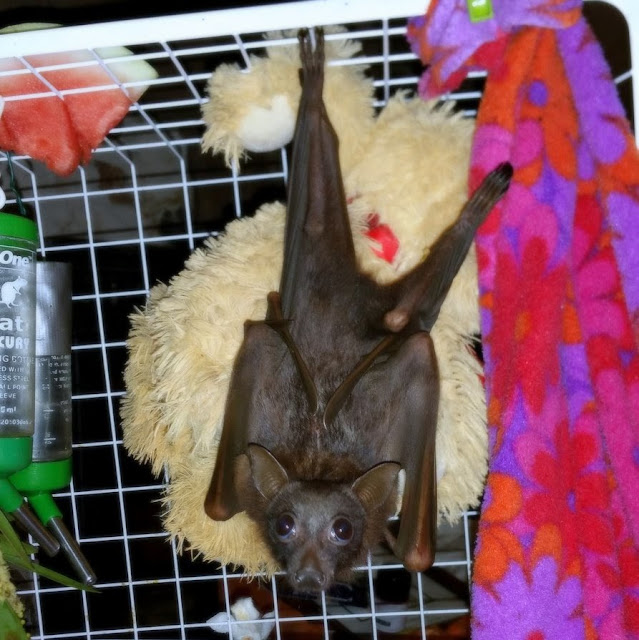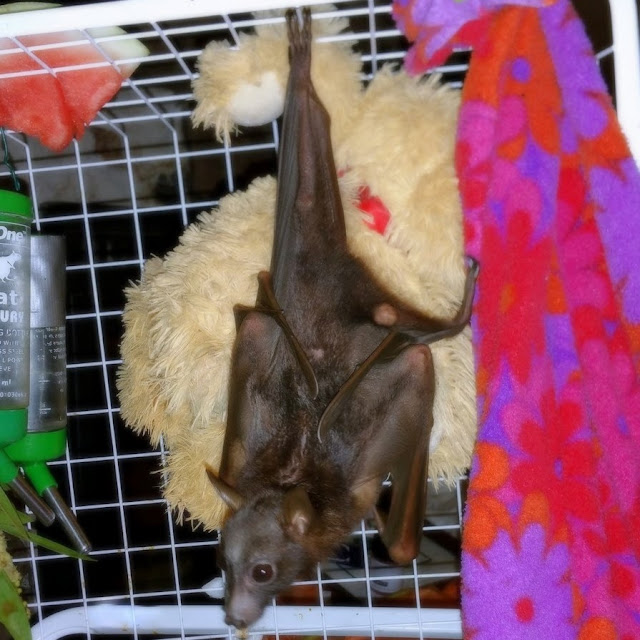Rehab 2016 | Jackie Sparrow | Megabat Little Red female
The little red flying-fox (Pteropus scapulatus) is a species of megabat native to northern and eastern Australia. With a weight of 300–600 grams (11–21 oz) it is the smallest flying-fox in mainland Australia (the others being the black, spectacled and grey-headed flying-foxes).
Rehab 2016 | Jackie Sparrow | Megabat Little Red female
It has the widest range of all the species, going much further inland than the larger fruit bats. Its diet primarily consists of nectar and pollen of eucalypt blossoms, the pollination of which it is largely responsible. The little red Megabat is nomadic, and can be found in large groups of up to a million individuals. This species gives birth six months later than the other mainland Megabat species, in April and May.
This species of Megabat hangs in a different way from other mainland species. The larger species tend to hang an arm's length apart; however, the little reds tend to clump together so they may hang in groups of 20 or more animals on an individual branch. They also tend to appear in very large numbers (20,000 or more) and the 'footprint' of a camp can expand rapidly for the several weeks or months they remain at a site.
The animals are nomadic and difficult to track, as they tend not to live in urban areas.
The species is very likely to be affected by the same factors that have seen the grey-headed flying-fox and spectacled flying-fox listed as threatened, that is, the destruction of foraging areas and roosting habitat.
Megabats mostly roost in trees and shrubs. Megabats are frugivorous or nectarivorous, i.e., they eat fruits or lick nectar from flowers. Often, the fruits are crushed and only the juices are consumed. The teeth are adapted to bite through hard fruit skins.
Frugivorous bats aid the distribution of plants (and therefore forests) by carrying the fruits with them and spitting the seeds or eliminating them elsewhere. Nectarivores actually pollinate visited plants. They bear long tongues that are inserted deep into the flower; pollen passed to the bat is then transported to the next blossom visited, thereby pollinating it. This relationship between plants and bats is a form of mutualism known as "chiropterophily".










sm done
ReplyDelete